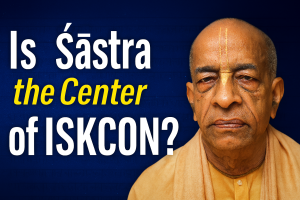In May 2025 the Supreme Court gave Bengaluru ISKCON control of the Hare Krishna Hill temple, rejecting Mumbai ISKCON’s claims, but in October a split verdict on Mumbai’s review petitions sent the matter to a larger bench, suspending Bengaluru’s victory. Madhu Pandit Das had hailed the earlier ruling as vindication of the ritvik system, where Prabhupāda is believed to continue initiating disciples after his departure, yet the later review makes that claim uncertain. And since even highly learned judges and spiritual leaders can make mistakes, the deeper issue remains: how can anyone be certain that interpretations of Prabhupāda’s intentions—whether for or against ritvik initiations—are free from error?

